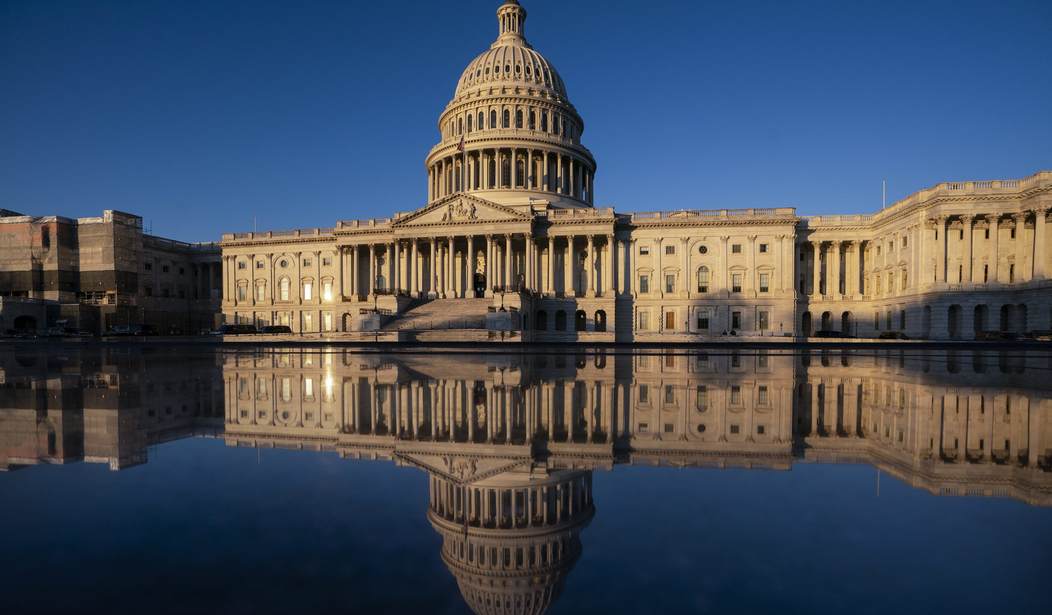There are a lot of ways the federal government flushes your money down the proverbial toilet. Some of that money goes to taxpayer-funded parties in Vegas, while other times it involves trillions of dollars spent on a little military excursion called the War on Terror or billions in cost overruns on programs like the F-35 engine.
One of the most astonishing ways our money disappears involves simple carelessness. The federal government lost $175 billion of your tax dollars in 2019 to improper payments, according to a recent Government Accountability (GAO) report. That’s over $500 per American…and the actual number is probably far higher.
Here are the lowlights, as well as a sliver of good news.
That $175 billion leaves a lot of unknowns.
Federal agencies are required to report improper payments, which are defined as “payments that should not have been made or that were made in incorrect amounts,” according to GAO. These are sometimes fraudulent payments, though most are simply human errors in our bloated federal bureaucracy – such as $74 billion which ended up in a place nobody knows. Most are also overpayments.
However, federal agencies are not required to report improper payments for all programs if the improper payments amount is projected to be below $10 million for the year or if the program’s total improper payments are projected to be less than $100 million total and its improper payment rate is below 1.5 percent.
To put it another way:
- This means that a federal agency could spend $10 million and not report improper payments as long as it improperly spent “only” $9.9 million of your tax dollars.
- That same federal agency would likewise not have to report $99 million in improper spending as long as its improper payment rate is below 1.5 percent.
These and other qualifiers mean that the $175 billion in “official” improper payments is likely a significant undercount. PaymentAccuracy.gov reports that the total amount of federal spending which was examined for improper payment estimates is nearly $3.5 trillion. This means just 79 percent of the 2019 federal budget of $4.4 trillion was examined.
Legal and illegal unknowns
The limits of legal requirements when it comes to reporting improper payments only account for one reason why these improper payments are underreported, GAO Director of Financial Management and Assurance Beryl Davis told PJ Media. There are three other reasons to doubt the official numbers:
- The improper payments reporting requirement threshold was met, but agencies have difficulties in estimating improper payments. For example, Davis highlighted the Temporary Assistance for Needy Families program, which the Congressional Research Service reported spent $16.3 billion in federal dollars and over $10 billion in funding from all states in 2018.
- The process for determining if a program met the threshold was not well thought out by agency overseers. Those programs may meet the legal threshold, or they may not… and we don’t know. GAO criticized the Department of Justice for this and also found that the Department of Health and Human Services did not assess at least 140 programs for improper payments.
- Some programs definitely met the threshold but the reporting was not done well. The Defense Finance and Accounting Service Commercial Pay program, for example, has faced GAO critiques in its estimating methodology since 2013, but as of June 2019 procedures to fix its methodology still hadn’t been fully implemented.
Social welfare is the majority culprit.
In 2019, as in past years, most of the reported improper payments came from Medicaid, Medicare, and the Earned Income Tax Credit. This totaled $121 billion, or 69 percent of all reported improper payments — $57.4 billion from Medicaid, $46.2 billion from Medicare, and $17.4 billion from the EITC.
Social welfare was not, however, the area which had the highest error rates. This was the proud distinction earned by several Veterans Affairs programs, two of which had error rates of over 90 percent! See the screenshot immediately below (the dollar estimates are in millions).
A sliver of good news
The annual estimates for improper payments have generally gone up year after year, due, in part, to the increasing size of the federal government. However, some of it is because the federal government is getting better at reporting on itself (the mismanagement referenced above notwithstanding). For example, just 68 percent of the federal budget was examined in 2014, but to the Obama administration’s credit that increased to over 80 percent in 2015.
From DoD to HHS, improper payments are just the lowlight.
It’s easy to go after federal agencies for incompetence, human error, and probably just simple laziness. But it is we the people who are responsible for the multi-trillion-dollar bureaucracy which makes it possible for $74 billion to slip through the cracks. We are responsible for the F-35 engine’s cost overruns, which the Pentagon began investigating earlier this year – and for the military adventurism which has cost so much in War on Terror blood and treasure. The same is true for Social Security and Medicare, which are bankrupting the nation but which are unpopular to necessarily cut because Americans want their piece of the program we’ve been forced to pay into.
If we can’t even elect people who will prioritize the low-hanging fruit, how will we ever take on the bigger budget challenges staring us in the face? Oh, right – we won’t.










Join the conversation as a VIP Member